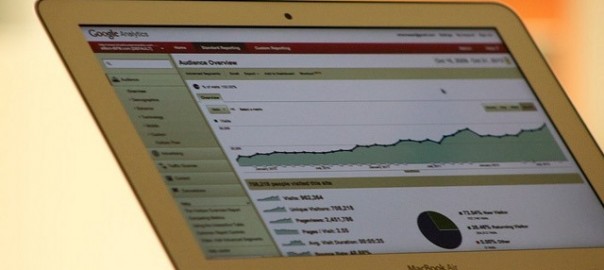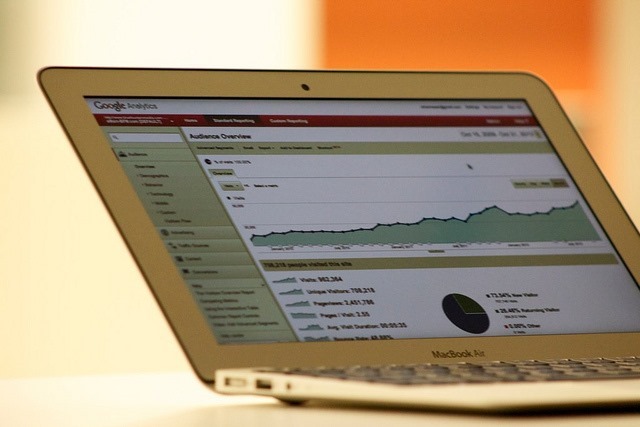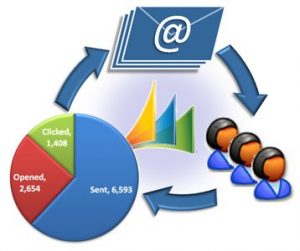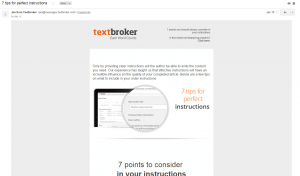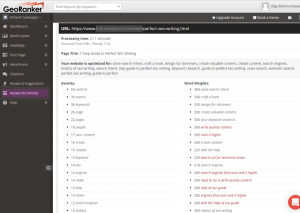Some years ago, I came across an interesting article about Jonathan Goldman, a PHD in physics who used his data mining skills and expertise of site Analytics to give LinkedIn a remarkable boost in its early days.
In the same article the author termed data science to be the sexiest job of 21st century, and man, was he right.
When it comes to data or analytics, all online businesses have it in one way or another. But only few have the common sense to properly manage it, and the knowledge to obtain meaningful insights from it.
Spending some time on this real-life information is better than worrying all the time about the so called ranking factors, and even worse, basing all your marketing decisions on gut feeling.
Many online businesses think of site analytics, and the only thing that comes to their mind is “unique visitors” or maybe the “number of sales”, but that’s just the tip of iceberg. What they don’t realize is that they are letting pass a wealth of opportunities.
Here’s what you can haul out from the site analytics.
What You Can Get From Site Analytics
1. You might be getting tons of visitors from a traffic source, but very few of them converting. On the other hand, some hidden gem might be sending fewer visitors with a higher conversion rate. Same goes for the keywords. A generic keyword might bring hundreds and thousands of visitors, but hardly any of them will convert, while some commercial keyword will bring fewer visitors with half of them converting. Site statistics can help you invest on the right keywords and the right traffic sources, instead of going for the useless numbers.
2. Ideally, your website traffic should be coming from a variety of sources. Site analytics will help you identify if you are depending entirely on a single traffic source e.g. Google. If that’s the case, you need to work on your social media, email marketing, and community building to prepare for the worst (e.g. Google penalty).
3. If you are hard-pressed to choose between so many social networks, because you want to focus on one or two social media platforms, your site statistics can help. Similarly, you’d know the best time to post on social media or your blog by looking at the response rate.
4. Know the content, pages, product categories, or links which are most visited by your visitors. It gives you an idea of the content or products which are in demand or searched by your target audience.
5. Create a systemized sales funnel and closely monitor the statistics. Knowing the strong or weak areas of your sales funnel is the first step towards better conversions. You’d know if you are lacking at getting the desired number of visitors to your website, or the attention, or conversion part?
6. Very few ecommerce stores or online businesses realize the importance of in-site search. Not only you need to have a visible, fast, and accurate searching option, but you also need to make use of this information to figure out what users want.
7. Use the analytics to improve the entry pages and exit pages of your website. If some particular page or section of your website has abnormally high exit rates, you can easily look into the problems and improve the design or contents of that particular page.
8. You’d know the life-time value of certain traffic sources or campaigns. It’s important to find the most valuable traffic source by comparing the success rate and life time value with the acquisition cost.
9. The demographics like age, gender, location, and language of your visitors will help you identify with your target market, and then create content, products, or promotions accordingly.
10. Site analytics will help you determine the ROI of your marketing campaigns, and concentrate on the right ones. It can also help you make the most of advance advertising methods like Retargeting.
And now some tools that you can use for data mining or analyzing purpose.
Google Analytics:
What you pay for is what you get, except when we are talking about the site analytics.
Google Analytics is one of those rare instances when a free service ranks amongst the best in business. No wonder Google Analytics is the most widely used solution. It is ridiculously easy to set up, just add a small snippet of code to your website, and you will start getting a stream of invaluable data like the number of unique visitors, traffic sources, demographics, bounce rate, etc on your dashboard. You can also create sales funnels, goals, use custom variables, and track the clicks on your social media buttons, to name only a few possibilities.
Adobe Analytics:
Adobe Analytics are more suited for medium to large enterprises (because of the high cost). It comes with advance segmentation and data visualization, mobile app analytics, real time reports, predictive marketing, Facebook analytics, and much more. Some unique features include conversion attribution, visitor loyalty, funnel visualization, and many different types of filters. If you’ve got the budget, Adobe Analytics is certainly worth the expense.
Clicky:
If you are looking for a premium real-time analytics solution, but not a pricey premium like Adobe Analytics, you can try Clicky analytics that cost less than $10 dollars a month. At such nominal price, it will give you loads of real time data, heatmaps, visitors’ segmentation, Twitter analytics, video analytics, and you can set up alerts for actions like conversion, campaign visitors, or logged in visitors.
Snoobi:
Snoobi is based in Finland, and for some reasons they have decided to use Finnish as their main website language, with no options to translate. They are mostly operating in regions like Finland, Netherlands, Sweden, or Belgium. But there’s an interesting feature for businesses operating in B2B markets. Snoobi can identify and provide you with a list of companies that visited your website. According to them, they can spot more than 3.5 million companies all over the world. The basic features include visitors’ statistics, real time analytics, email campaign tracking, social media tracking, Facebook integration, forms and fields tracking, etc.
Woopra:
Woopra is a premium service, but you can try it for free, while using the 30 day trial period. Woopra provides you with real time analytics, customer segmentation based on behavior, detailed funnel reports,
(334)
Report Post